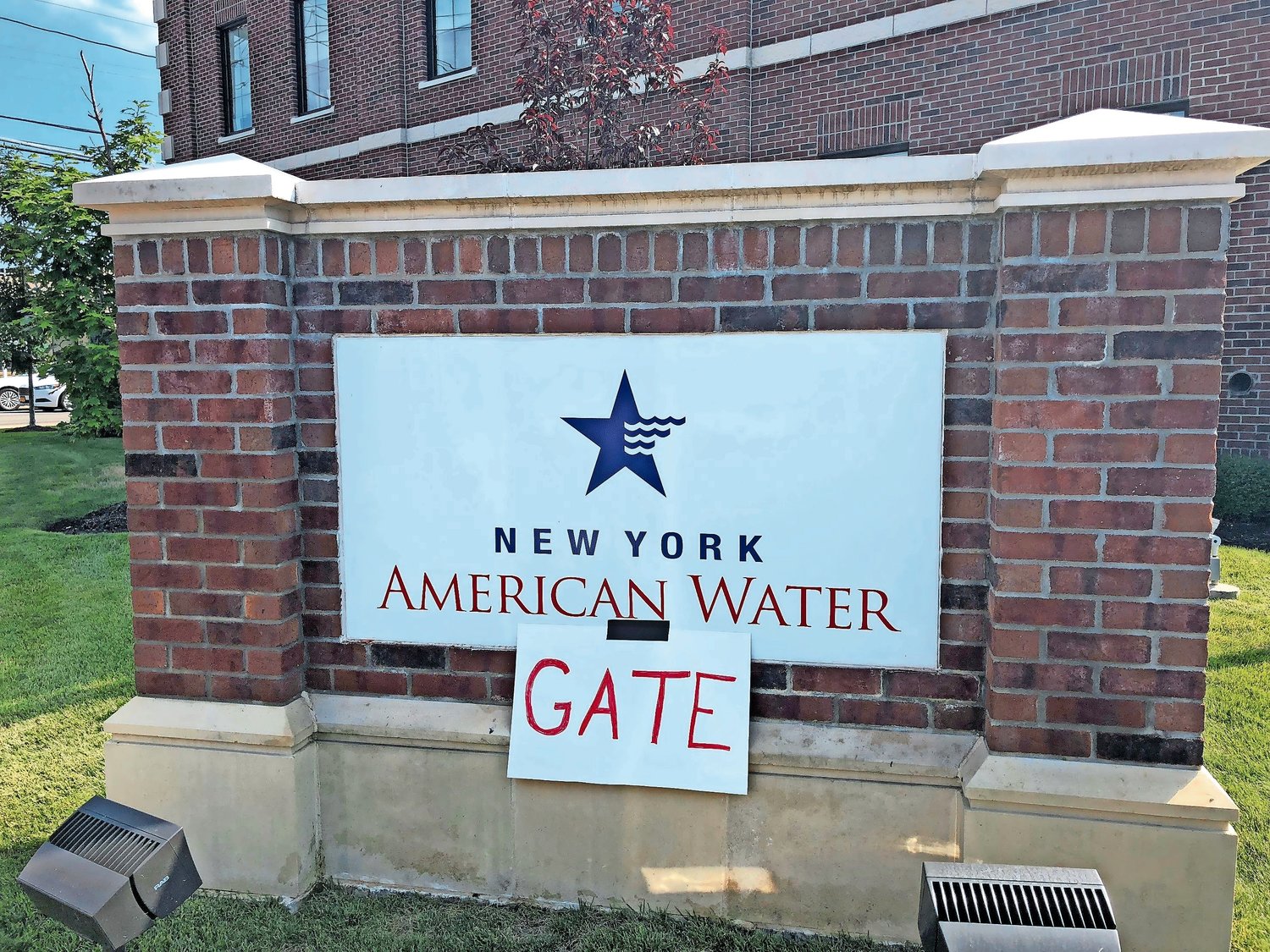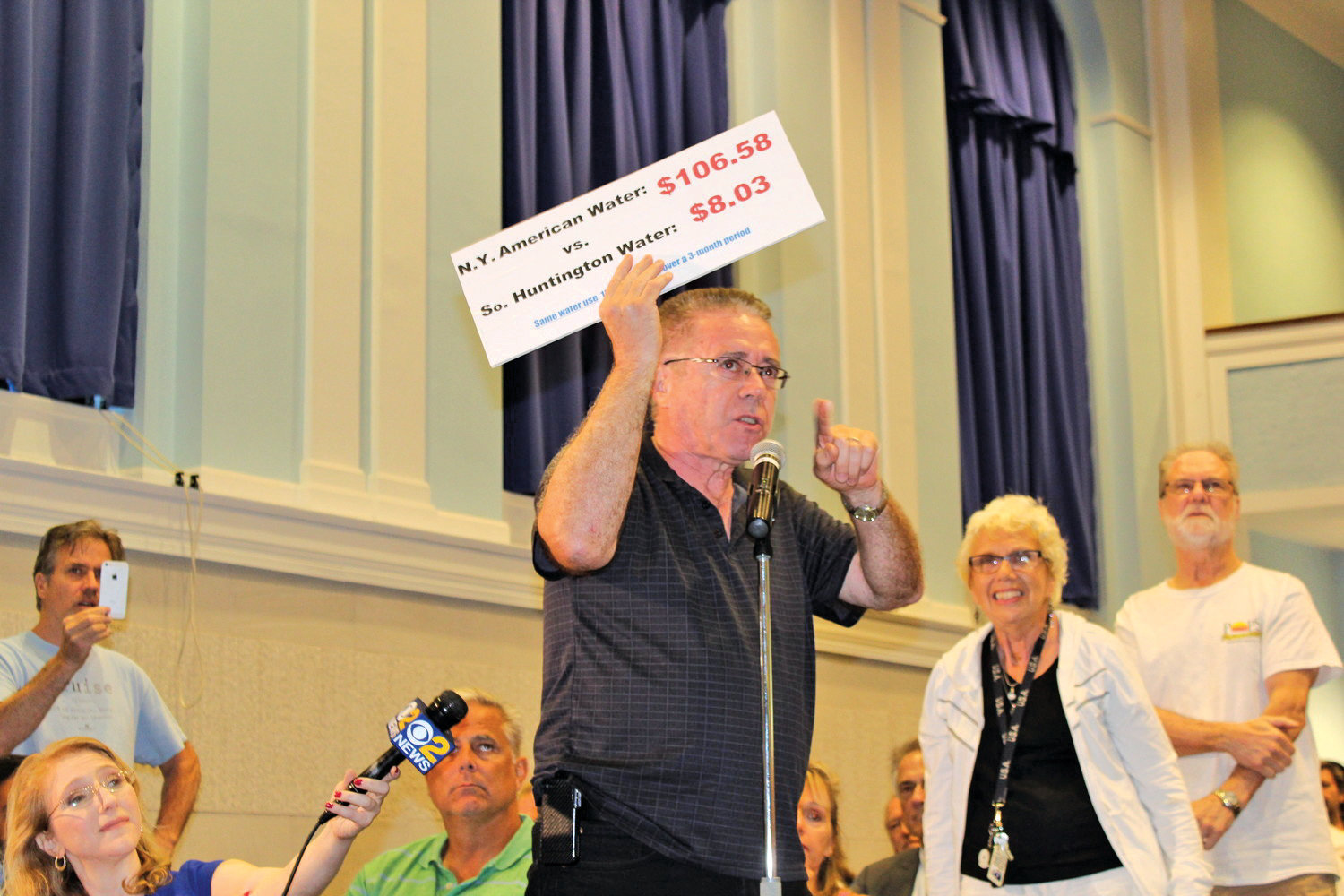Audit blames NYAW for high bills
A lack of communication coupled with a longer-than-average billing period contributed to the shock that New York American Water customers had when they opened their bills last year, according to an audit that the state Public Service Commission accepted on July 11.
In it, the independent monitor, U.K.-based PA Consulting, found that the billing period from July 2018 was longer than normal, with 30 to 35 days in the cycle compared with 24 to 31 days in the cycle the following month, which contributed to higher customer bills.
The group also reported that “the predominant reason for the extensive bill complaints” that NYAW received last year was its “failure to properly communicate” its new conservation rates, which divided customers into four tiers based on the volume of water they used.
In the Lynbrook service district, for example, customers who used 3,000 gallons or less between April 1, 2018, and March 31, 2019, paid about 43 cents for every 100 gallons, but customers who used more than 15,000 gallons during that period paid $1 per 100 gallons. And in the Merrick and Sea Cliff service districts, customers who used 3,000 gallons or less during that period paid 18 cents per 100 gallons, and those who used more than 15,000 gallons paid 50 cents.
The rate hikes took effect in 2017, after the state’s Department of Environmental Conservation requested that every water utility on Long Island reduce its consumption by 15 percent to preserve the Magothy Aquifer, which is Long Island’s predominant water source.
But according to the audit, NYAW’s communications between April 2017 and April 2018 “did not outline the impact the inclining block rate structure could have on customer bills, or the need for water conservation.” As a result, residents continued to water their lawns and consume water as they previously had, forcing them into the highest usage tier. When bills arrived at the end of the month, the residents were surprised by the high costs, and thousands complained to the utility and public officials.
PA Consulting sifted through the complaints and found that 64 percent of them were related to the new rate structure, with 61 percent of those customers being in the fourth, or highest, tier. It also found that more than half of all customers who complained saw a year-to-year increase of more than 50 percent in their bills.
Even those who used less water paid more under the system. Base rates, which exclude taxes and surcharges, were only supposed to increase by 5 percent, according to utility officials, but State Sen. Todd Kaminsky said he had heard from constituents who saw rates jump by as much as 135 percent.
“The independent monitor’s report regarding the billing issues paints a clear picture of a utility that failed to communicate to customers important aspects of its rate structure as well as the objectives of conservation,” PSC Commissioner John Rhodes said in a statement.
To ensure that customers are no longer surprised by rate increases, PA Consulting included 23 recommendations in its audit to improve NYAW’s operations (see box). These include limiting billing cycles to 30 to 31 days, developing conservation kits for customers and using “every reasonable opportunity to demonstrate the linkage between consumption and cost, and the benefits of conservation.”
Representatives of the utility said on June 26 that they accepted the recommendations, and would work with the state PSC to implement the changes over the summer.
“These findings are an important component of our comprehensive efforts to take a critical look at our operations and customer service, and identify areas for improvement so we can better serve our customers,” NYAW President Lynda DiMenna said in an emailed statement. “As part of this effort, New York American Water is executing a robust, multi-faceted communication plan that focuses on alerting customers to the conservation rates as well as educating them about tips, tools and technology they can use to save water and money.”
DiMenna added that the utility would establish consistent billing cycles and “continue our robust communication efforts with our customers, elected officials and stakeholders to provide them with timely, transparent and actionable information.”

 49.0°,
Fair
49.0°,
Fair 







